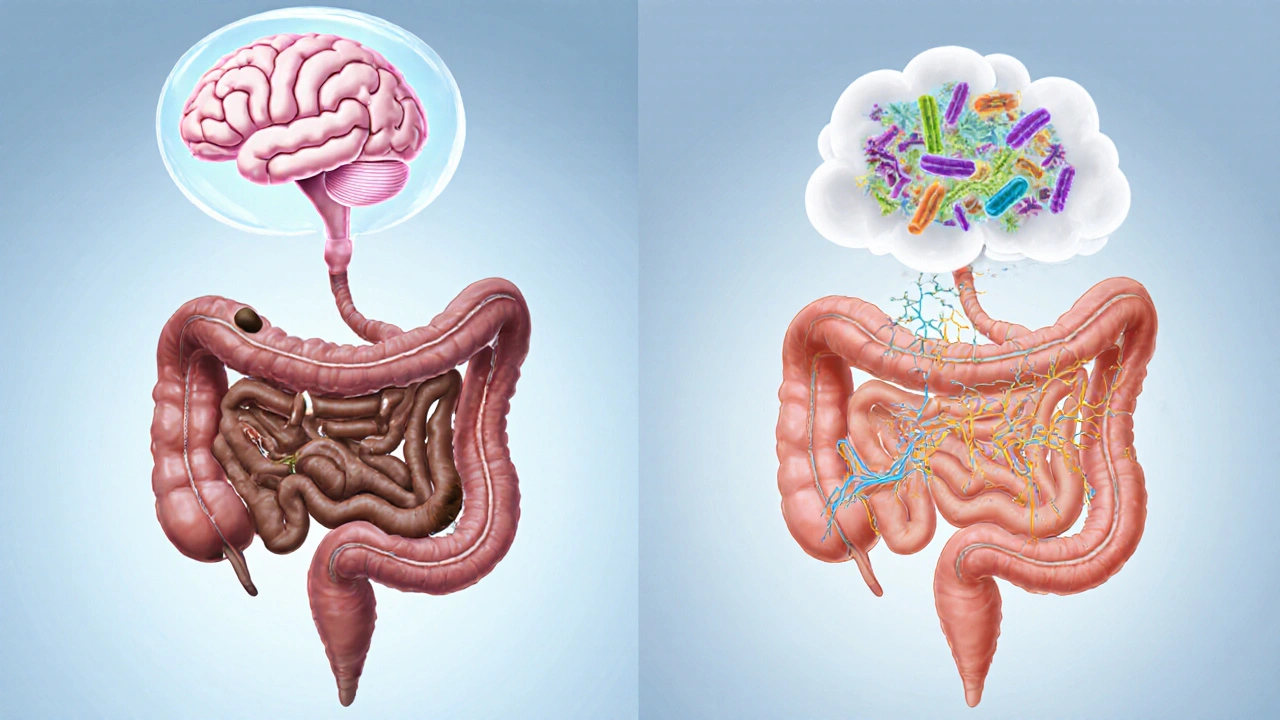Gut Dysbiosis
When dealing with Gut Dysbiosis, an imbalance of the gut microbiome that can affect digestion, immunity, and overall health. Also known as intestinal dysbiosis, it often stems from poor diet, antibiotics, or chronic stress.
The root of the problem lies in the Gut Microbiome, the complex community of bacteria, fungi, and viruses residing in our intestines. When this ecosystem is disrupted, you may notice bloating, irregular bowel movements, or even mood swings. Gut dysbiosis frequently follows a course of broad‑spectrum antibiotics that wipe out beneficial microbes while allowing opportunistic species to flourish. Adding Probiotic Supplementation, targeted live cultures designed to repopulate the gut with helpful bacteria can tip the scales back toward balance. Yet probiotics work best when paired with adequate Dietary Fiber, prebiotic substrates that feed resident microbes and promote their growth.
Why does this matter? An imbalanced microbiome interferes with Nutrient Absorption, the process by which vitamins, minerals, and macronutrients are taken up from food. When dysbiosis is present, you might see iron‑deficiency anemia, low vitamin D, or unexplained fatigue despite a seemingly balanced diet. The same disruption can trigger low‑grade inflammation, which fuels conditions like irritable bowel syndrome, metabolic syndrome, and even mood disorders. In many cases, the excess of gas‑producing bacteria leads to small‑intestinal bacterial overgrowth (SIBO), a specific form of dysbiosis that demands a tailored therapeutic approach.
How to Reset Your Gut
Practical steps start with diet. Load your plate with fiber‑rich vegetables, legumes, and whole grains—these act as food for beneficial microbes. Fermented foods such as kimchi, sauerkraut, and kefir introduce live cultures that can jump‑start the restoration process. When choosing a probiotic, look for strains backed by research, like Lactobacillus rhamnosus GG or Bifidobacterium longum, and take them on an empty stomach for optimal colonization. Lifestyle matters, too: regular exercise, adequate sleep, and stress‑management techniques (mindfulness, breathing exercises) all support a healthier microbiota.
Testing isn’t always required, but a stool analysis can pinpoint which bacterial groups are low and which are overgrown. This information lets you fine‑tune your probiotic selection and adjust fiber types—soluble vs. insoluble—to match your unique profile. Remember, rebuilding a microbiome is a marathon, not a sprint; consistency over weeks to months yields the best results.
Below you’ll find a curated set of articles that dive deeper into each of these topics. From identifying hidden triggers of gut dysbiosis to comparing specific probiotic formulas, the collection offers actionable insights you can apply right away. Explore the resources to gain a clearer picture of what’s happening inside your gut and how to take control of your digestive health.
Explore how chronic idiopathic constipation and irritable bowel syndrome are linked, their shared mechanisms, diagnostic tips, and effective treatments in a clear, practical guide.

